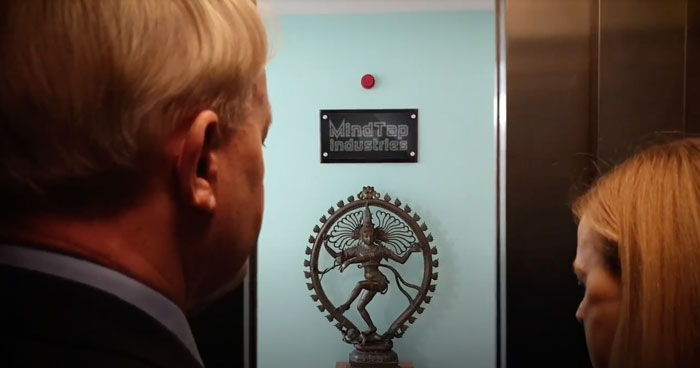Cinematic Camera Movements You Can Do With Your Smartphone: The Reveal
I’m going to tell you something really important. But not yet. First, I need to tell you some other stuff.
Why?
Because that’s storytelling.
If you I told right now the most important thing you needed to know, there’d be no need for me string this out into a whole 2000 word article. I could just tell you in two sentences and then you could do something else.
Certainly, it would save you time. But it wouldn’t be as fun. And you probably wouldn’t understand this important thing I need to tell you very well.
Plus, you might not come back to read any more of my articles if they only took 10 seconds to read. You’d probably feel cheated somehow.
Like there was something missing.
Because a good story doesn’t just tell you a fact or a truth. It takes you on a journey.
A good story takes you from one place to another. And on the way, you experience many things.
And, by the way, even your 60 second advert or travel video is a story.
The Important Thing I Need To Tell You…
…is central to your job as a storyteller. It’s absolutely key. You can’t even really be a story teller without it.
But before I tell you what it is, let’s talk about cinematic camera movements you can create with your smartphone. The one I want to talk about today is the reveal.
The reveal is not only a camera movement, it’s also integral to storytelling. In screenwriting, for example, we also talk about reveals. And the two types of reveal in filmmaking – camera and script – work together.
And if you understand one, it will help you to understand the other.
But Let’s Keep This Simple
Whereas with still images you can only show one image, with moving images you can show one, then another. Therefore, you can reveal something in a single shot.
A reveal shot is very easy to do, in practical terms. Because it’s about human storytelling imagination, it doesn’t matter if your camera shoots 1080p or 4K. A cool reveal shot is just as cool, no matter your resolution.
Peek-a-Boo
What do I mean by reveal? For example, place the camera behind something like a wall or a tree, then move it to reveal what’s behind.
If you go from a blank image (like a wall), it’s not as strong as starting with something interesting and then move to reveal different interesting image. Even more so if the first image relates to the second in some way.
Inside Out
Start from inside an object or location and then move your camera out to reveal what it was inside. Your audiences’ point of view is changed dramatically. And that’s what good storytelling is all about.
If your audience get to the end of your story with the same point of view as when they started, what’s the point?
Moving Into Focus
Focus is a great tool to use for creating a reveal shot. Start with your subject out of focus and then move the camera so as to bring it into focus. You can also use a focus pull for a cool reveal shot too.
Black Screen Reveal
Cut to a black screen. Then cut to a shot where something is filling the screen and making it black. Now either move the camera or have the subject move to reveal itself or what’s behind.
This can also be a cool transition.
Outside In
Like the inside out, except in reverse. For example, start looking out across a landscape. Then move the camera back through a window to reveal the room with a view you occupy.
Perfect for travel videos. Only problem might be the change in light levels. But sometimes the auto exposure can work for this shot. Or film at a time when the light level outside is roughly the same as inside.
Upside Down
Start close up and upside down. Then, if you can, turn the camera 180 degrees while moving backwards.
Pull Back
A simple pull back to reveal shot is pretty easy to do. But probably best not to use zoom, unless you have good optical zoom on your smartphone. One tip is to use live focus, if you can, so the subject remains in focus while you change distance from the camera.
Shock Horror
Horror films rely heavily on reveals designed to shock and/or horrify the audience. A flashlight beam moving around inside a pitch back cellar, for example. Or opening a box or door, or a silent figure standing with their back to the camera. They turn to reveal…
But the horror reveal works best after some anticipation has been set in the audiences mind first.
Door to a New World
You can also use doors as reveals. A door opens and what’s on the other side? Is it what the audience expected?
An opening door really gives the audience a sense of going from one place to another – a story is a journey, remember. In 4th episode of Silent Eye, Museum of Me, we open with a reveal shot.
2 people we don’t know are riding in an elevator. The elevator doors open to reveal a sign on a wall. The sign says “Mind Tap Industries”. As this story is all about a future world where your mind can be dowloaded into a virtual museum, the sign is very important. So the story starts with this very important reveal in the first shot and sets the stage for the rest of the movie.
And More…
There’s as many reveal shots as you can think of. This shot is limited only by your imagination. Essentially, it’s about changing the audiences point of view, taking them from one idea to another.
Surprise Surprise
If you can add some kind of unexpected twist to the shot, then all the better. This surprise element will really thrill and engage your audience. Most people love to have their perception altered. Especially when watching a movie, it’s what we buy our cinema ticket for.
It’s one of the reasons Christopher Nolan films are hugely successful around the world. They often alter our perception of reality, sometimes in a way our brains can struggle to cope with.
One Nolan’s first ever films was a short called Doodlebug. You can see it via the YouTube link below. Watch out for the big, disturbing reveal point towards the end.
Indeed, the whole film, shot in 1997 during Nolan’s university days, is built around this reveal. So it shows you how important reveals are to good stories, something this master storyteller knew right from the beginning of his adventures in filmmaking.
A reveal shot doesn’t have to be a camera movement. The reveal can be an object moving that was blocking our view of the thing to be revealed. In Doodlebug it’s some underwear.
This is where we get creative as filmmakers. It could be a door opening, curtains being pulled aside or a light being switched on.
Everyday Reveal Shots
Now you get the idea, you can include reveal shots as part of your everyday filmmaking exercises. If you’re like me, you will nearly always have your smartphone with you. So if you spot an interesting reveal, spend a few moments and grab that shot.
The reveal is another one of those 3 step shots which I think are so helpful to practice when learning to be a filmmaker. Remember, each 3 step shot has a beginning, middle and end. So a reveal shot is made of 3 steps like this:
- set first frame – what are we looking at?
- camera or object movement to reveal…
- second frame – what new world or idea do we see?
Try to think of an interesting reveal. For example, a few months ago I was passing a building site for new apartment blocks in London. Stuck to the wall outside was an artist’s impression of what it would like. Meanwhile, the other side of the wall was the current reality – an ugly building site.

At the time, I only took a still photo. But I could have filled my first frame with the artist’s impression so that the viewer might think they were looking at some kind of paradise. Then I could have moved the camera to reveal the building site behind.
The point of this shot might be to contrast the fantasy of the artist’s impression with the reality of the building site, hiding behind the facade.
The Promise
While the reveal itself can be a simple camera movement or the climax of a complex story development, the promise of a reveal can keep an audience hooked. At the start, I promised to reveal something important to you and that’s perhaps the main reason you kept reading until now. Or maybe you skipped to the end if you couldn’t wait (or you didn’t trust me to make the journey worth your time).
Well, here it is. I’m going to reveal the important thing you need to know…
The important thing you need to know is…
Moving Stories
In some senses, a story (whichever way you tell it) is a journey from one place to another. The journey might not be a physical journey on a train or in a car, but it should take us somewhere different. Although, some movies are indeed physical journeys (eg: road movies).
That’s why practicing reveal shots is simultaneously practicing storytelling skills. So take a minute and think how you want to change your audience’s point of view. What do you want to reveal to your audience?
In storytelling, novel writing, filmmaking or screenwriting and so on, the big reveal can involve a great deal of setup. The impact a reveal has on the audience can be central to the story you want to tell. It’s also key to what you as a storyteller want to reveal to your audience. In other words, on a higher level the reveal shows the audience a new way of seeing the world.
Therefore, if you want to raise your filmmaking to a higher level, you need to think carefully about what you reveal to your audience. What you need to understand is that storytelling is about where you start, where you end and how you get there.
Eager to learn more?
Join our weekly newsletter featuring inspiring stories, no-budget filmmaking tips and comprehensive equipment reviews to help you turn your film projects into reality!
Simon Horrocks
Simon Horrocks is a screenwriter & filmmaker. His debut feature THIRD CONTACT was shot on a consumer camcorder and premiered at the BFI IMAX in 2013. His shot-on-smartphones sci-fi series SILENT EYE featured on Amazon Prime. He now runs a popular Patreon page which offers online courses for beginners, customised tips and more: www.patreon.com/SilentEye


